PRDM16-dependent antigen-presenting cells induce tolerance to gut antigens
- PMID: 40228524
- PMCID: PMC12176658
- DOI: 10.1038/s41586-025-08982-4
PRDM16-dependent antigen-presenting cells induce tolerance to gut antigens
Abstract
The gastrointestinal tract is continuously exposed to foreign antigens in food and commensal microorganisms with potential to induce adaptive immune responses. Peripherally induced T regulatory (pTreg) cells are essential for mitigating inflammatory responses to these agents1-4. Although RORγt+ antigen-presenting cells (APCs) have been shown to programme gut microbiota-specific pTreg cells5-7, their definition remains incomplete, and the APC responsible for food tolerance has remained unknown. Here we identify an APC subset that is required for differentiation of both food- and microbiota-specific pTreg cells and for establishment of oral tolerance. Development and function of these APCs require expression of the transcription factors PRDM16 and RORγt, as well as a unique Rorc(t) cis-regulatory element. Gene expression, chromatin accessibility, and surface marker analysis establish the pTreg-inducing APCs as myeloid in origin, distinct from type 3 innate lymphoid cells, and sharing epigenetic profiles with classical dendritic cells, and designate them PRDM16+RORγt+ tolerizing dendritic cells (tolDCs). Upon genetic perturbation of tolDCs, we observe a substantial increase in food antigen-specific T helper 2 cells in lieu of pTreg cells, leading to compromised tolerance in mouse models of asthma and food allergy. Single-cell analyses of freshly resected mesenteric lymph nodes from a human organ donor, as well as multiple specimens of human intestine and tonsil, reveal candidate tolDCs with co-expression of PRDM16 and RORC and an extensive transcriptome shared with tolDCs from mice, highlighting an evolutionarily conserved role across species. Our findings suggest that a better understanding of how tolDCs develop and how they regulate T cell responses to food and microbial antigens could offer new insights into developing therapeutic strategies for autoimmune and allergic diseases as well as organ transplant tolerance.
© 2025. The Author(s).
Conflict of interest statement
Competing interests: D.R.L. is a cofounder of Vedanta Biosciences and ImmunAI, on the advisory boards of IMIDomics, Sonoma Biotherapeutics, NILO Therapeutics and Evommune, and on the board of directors of Pfizer Inc. All other authors declare no competing interests.
Figures








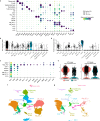
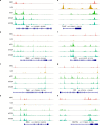

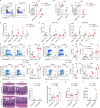
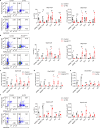
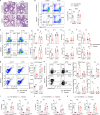

Update of
-
Prdm16-dependent antigen-presenting cells induce tolerance to intestinal antigens.bioRxiv [Preprint]. 2025 Mar 3:2024.07.23.604803. doi: 10.1101/2024.07.23.604803. bioRxiv. 2025. Update in: Nature. 2025 Jun;642(8068):756-765. doi: 10.1038/s41586-025-08982-4. PMID: 39091750 Free PMC article. Updated. Preprint.
References
-
- Bilate, A. M. & Lafaille, J. J. Induced CD4+Foxp3+ regulatory T cells in immune tolerance. Annu. Rev. Immunol.30, 733–758 (2012). - PubMed
-
- Whibley, N., Tucci, A. & Powrie, F. Regulatory T cell adaptation in the intestine and skin. Nat. Immunol.20, 386–396 (2019). - PubMed
-
- Ramanan, D. et al. Regulatory T cells in the face of the intestinal microbiota. Nat. Rev. Immunol.23, 749–762 (2023). - PubMed
MeSH terms
Substances
Grants and funding
LinkOut - more resources
Full Text Sources
Molecular Biology Databases
Miscellaneous

